
Brick Wall Detail Drawing / This tutorial uses exact measurements and
Wall sections form a key component of the design and construction process, by providing a vital form of communication for both architects and contractors. However particularly for architecture students and young/inexperienced licenced architects, when it comes to producing such a drawing, they can be incredibly intimidating.
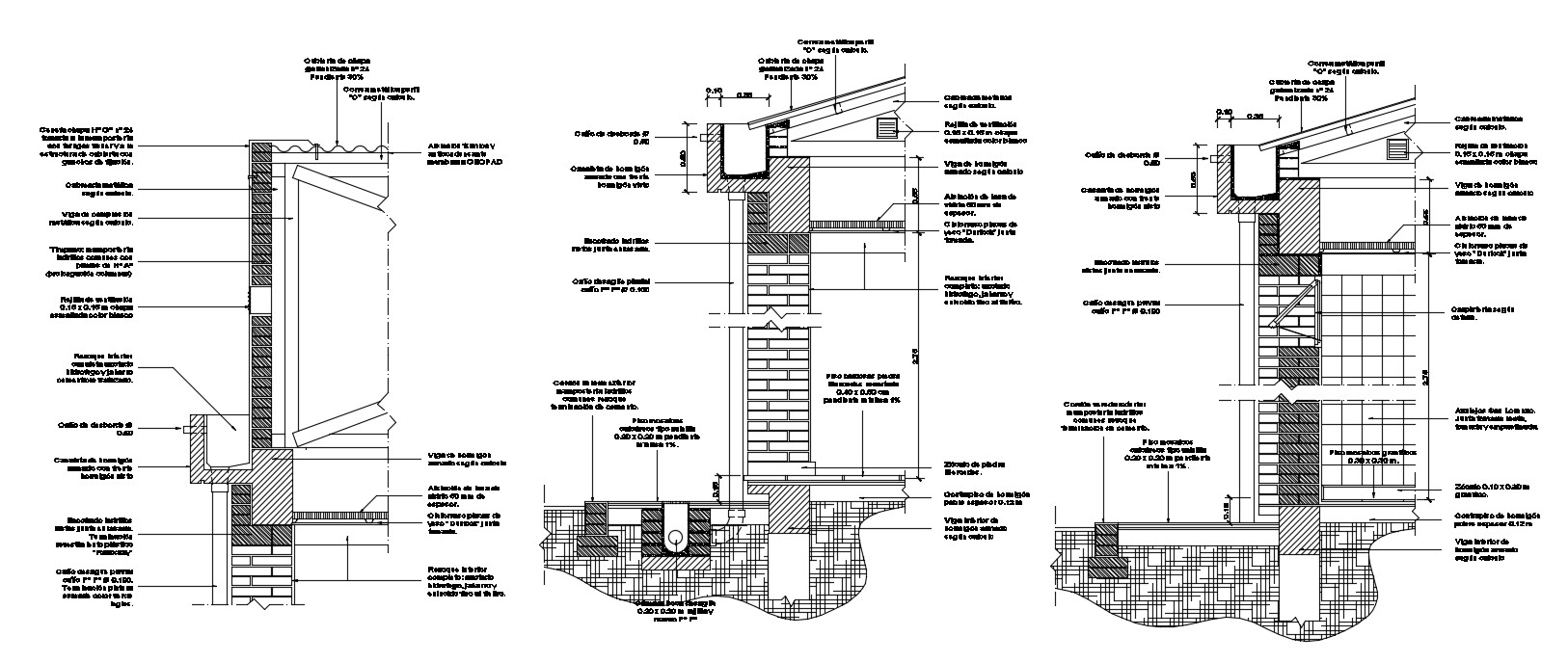
Brick Wall Section Cadbull
Apply mortar. Press a brick into either end of the wall, using the guidelines and level to make sure they are at the right height. Do the same thing one row above the one you're currently working on. Measure, mortar, and build the bottommost row, (infill the courses). Repeat the process one row higher.
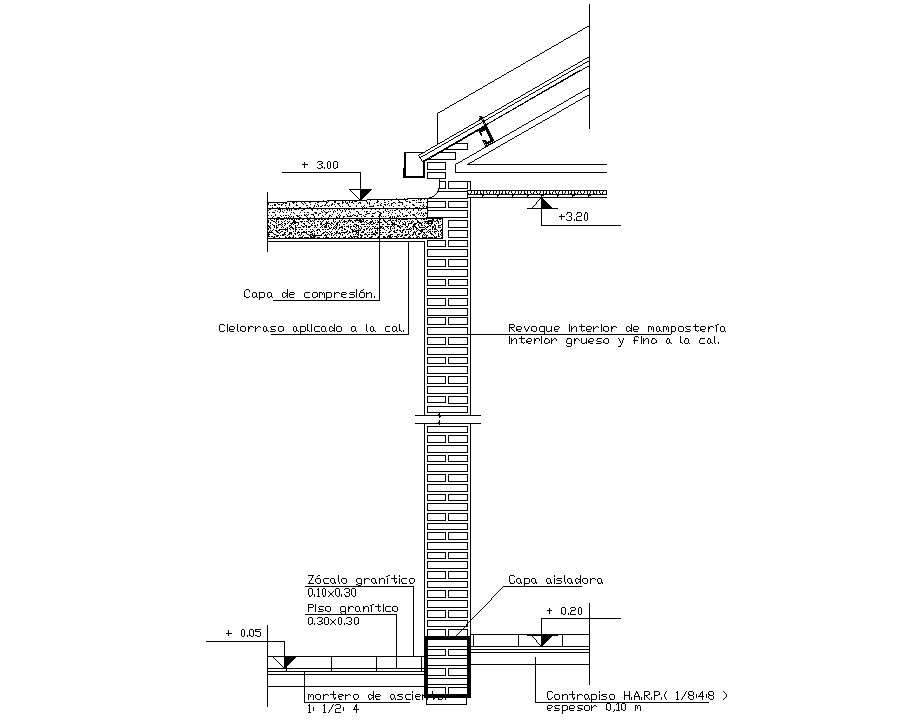
Brick Wall Section AutoCAD drawing Cadbull
Navigate Section INTRODUCTION Multiwythe masonry walls can take one of several forms: composite, noncomposite or veneer walls. The primary differences between these wall systems are in construction details and how applied loads are assumed to be carried and distributed through the loadbearing system.

DOUBLE BRICK WALL SECTION Brick construction, Wall section detail
Stretcher. A masonry unit laid flat with its longest dimension parallel to the face of the wall. Wythe. A continuous vertical section or thickness of masonry 4" or greater. Brick Walls QUIKRETE® Mortar Mix or Mason Mix Bricks Chalk line Mortarboard Hose Wheelbarrow Trowel Level Carpenter's square Tape measure Brick set Mason's hammer Goggles
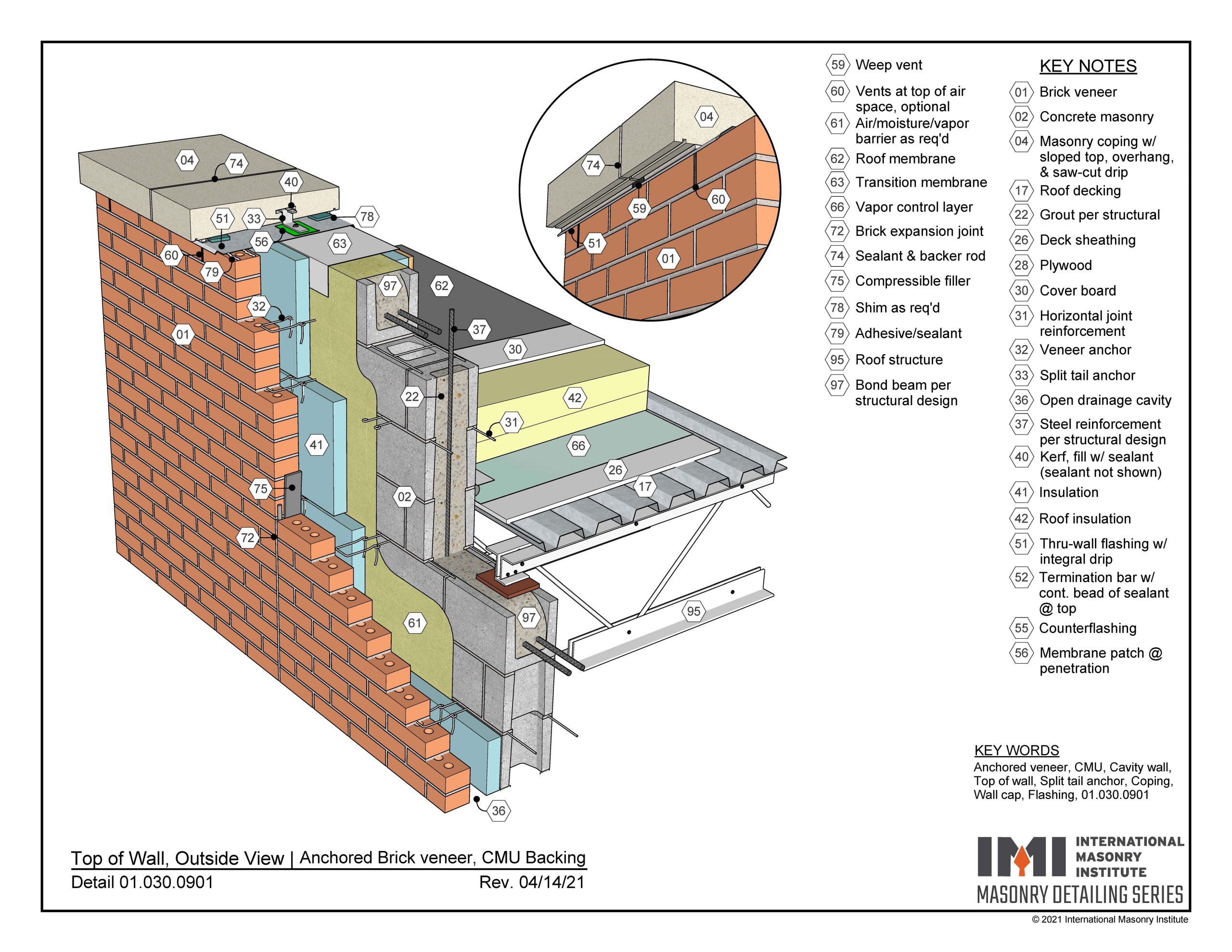
Image Result For Cmu Wall Section Coping Stone Brick Veneer My XXX
Typical Brick masonry wall section This is a typical section of a brick masonry wall used in residential buildings typically found in SE Asian countries. Add to wish list $7.00 - Purchase You must log in to submit a review. Product Details Angel Author since: August 14, 2016 4 Purchases 0 Comments $7.00 Add to wish list Purchase
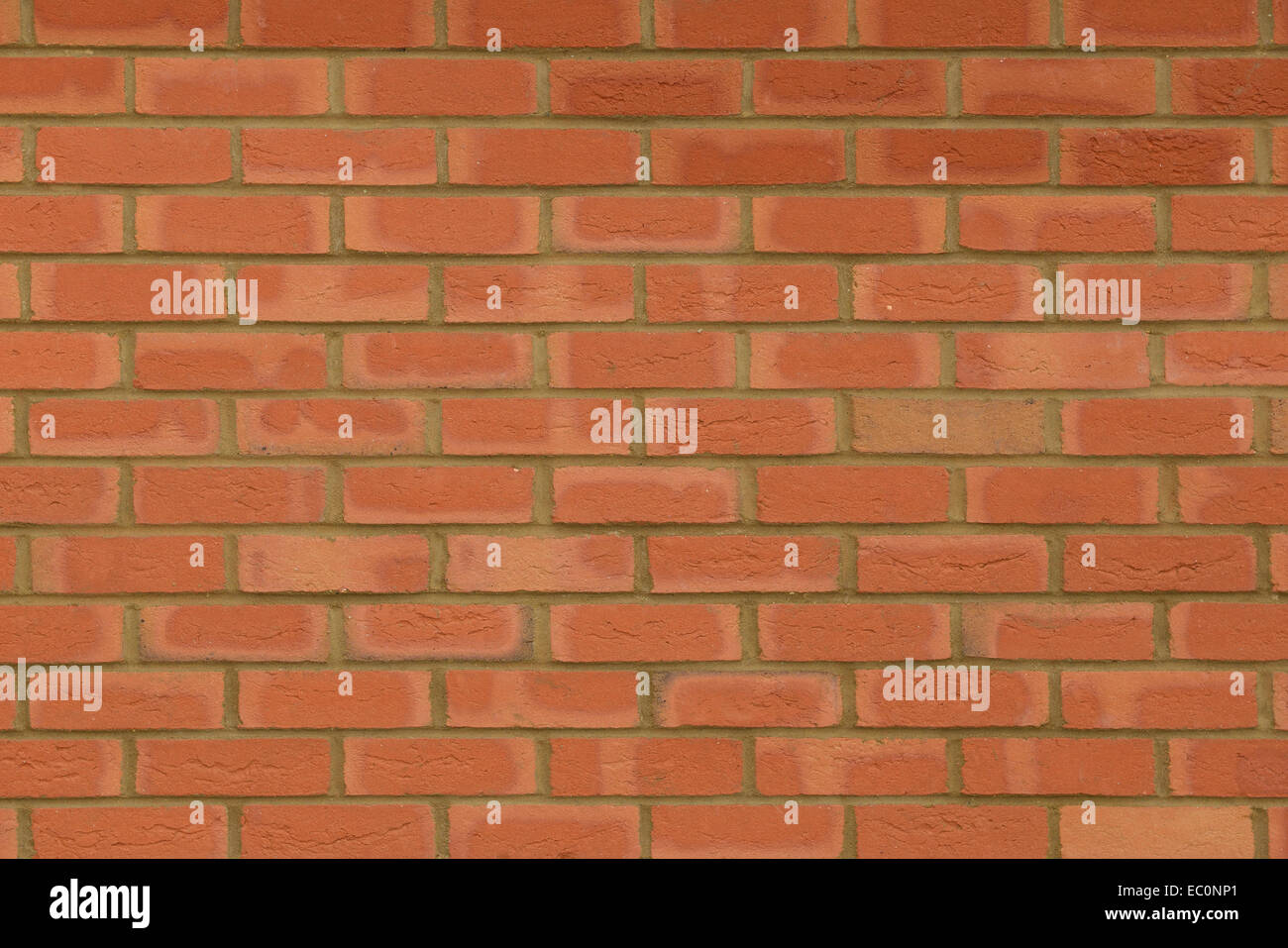
Section of a modern brick wall Stock Photo Alamy
Brick veneer exterior wall systems contain one non-loadbearing wythe on the exterior for aesthetic purposes & provide an exterior barrier for protection.. Chapter 6: Energy Conservation, Efficiency and Atmospheric Quality (Section 606: Building Thermal Envelope insulation and Air Sealing) Alternative Compliance Path: ASHRAE 189.1-2009;

Wall section // brick veneer // 3/4" rigid insulation
Code, Section 1402 defines a veneer as: "VENEER. A facing attached to a wall for the purpose of providing ornamentation, protection or in-sulation, but not counted as adding strength to the wall." "Anchored Masonry Veneer. Veneer se-cured with approved mechanical fastener to an approved backing." When the facing is brick and the backing is
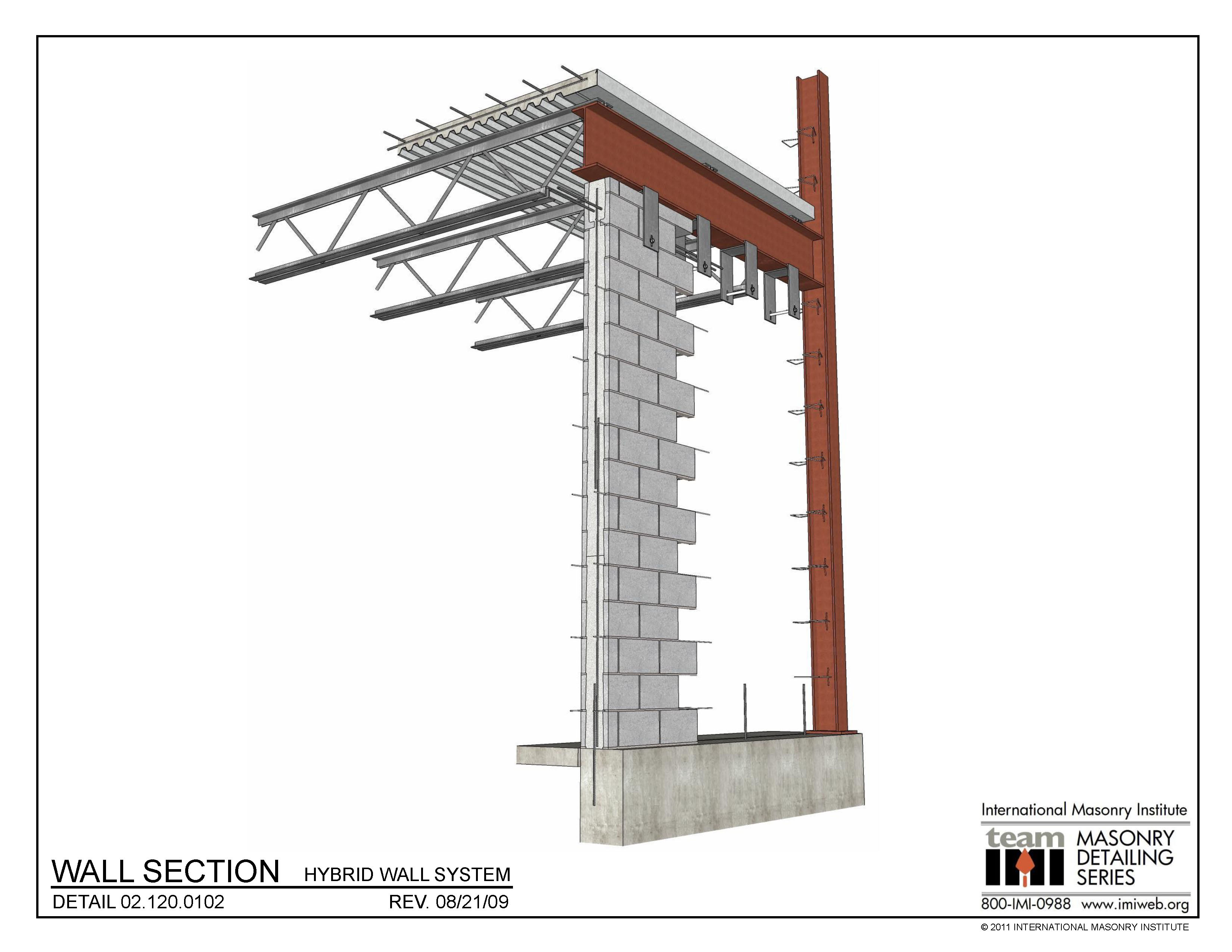
02.120.0102 Wall Section Hybrid Wall System International Masonry
Structural Brick Veneer is a unique approach to the design and construction of brick exterior walls. Strengthening the brick with steel reinforcement provides new opportuni-ties for reducing the cost of the wall, increasing design flexibility and improving wall performance. In use for more than thirty years, the approach has been used extensively
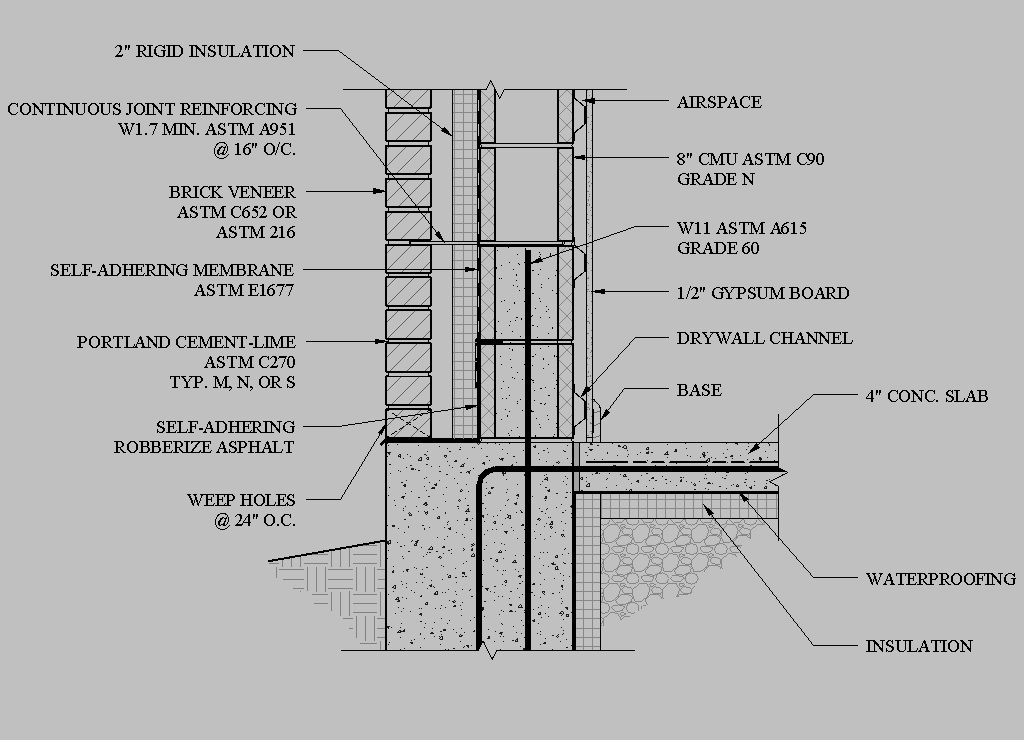
Brick Wall Detail Drawing / This tutorial uses exact measurements and
Below is an example of a section of wall showing a brick return, end of wall and internal wall junction. Conclusion The setting out of brick is an important part of the design process and will guide the dimensions of walls, windows, doors and other features on a building's elevation.

brick wall detail Google Search Architectural details Pinterest
#28 - Anchored Brick Veneer - Wood Frame Construction #28B - Brick Veneer/Steel Stud Walls #36 - Brick Masonry Details - Sills and Soffits #36A - Brick Masonry Details - Caps and Copings, Corbels and Racking 3. National Lime Association (www.lime.org) Lime-Based Mortars Create Watertight Walls 4. The Masonry Society (www.

Fig. 2.Section of a Hollow Wall. Masonry wall, Solid brick, Wall
Detailing Series. IMI's Detailing Series is a collection of illustrative construction details and diagrams for architects and engineers to use as a design resource. Find new construction details for brick, CMU, stone, ceramic tile, terrazzo, plaster/stucco, rainscreens, terra cotta, and AAC, along with a collection of masonry restoration details.
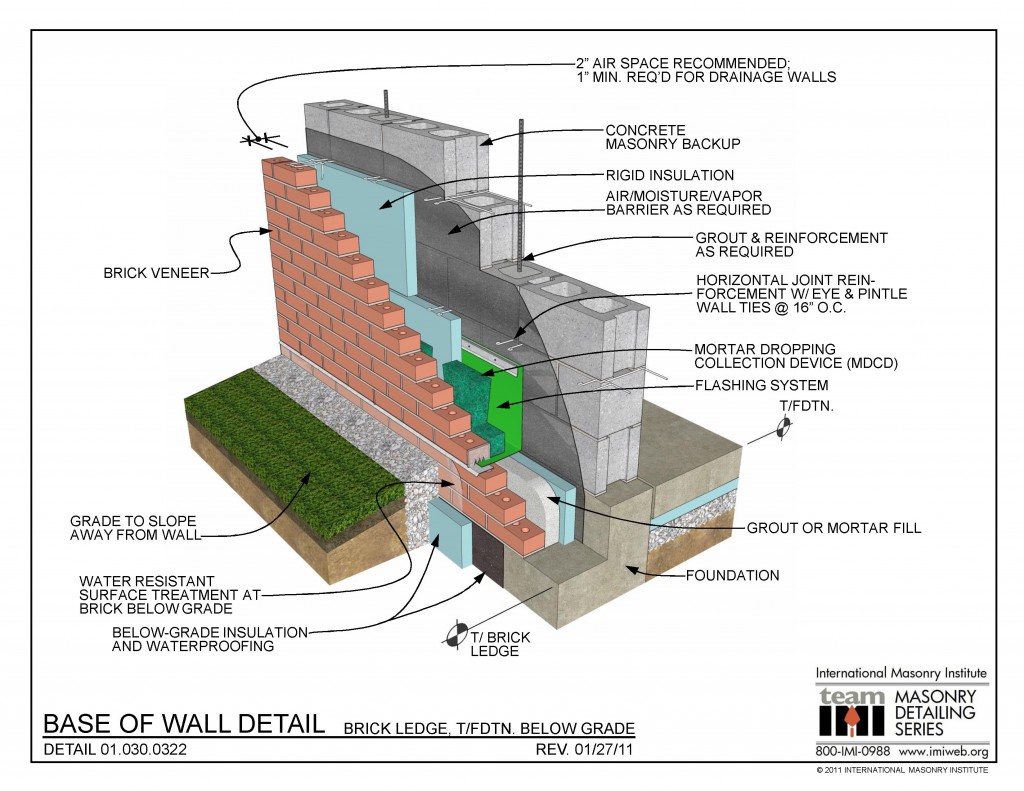
01.030.0322 Base of Wall Detail Brick Ledge, T/FDTN. Below Grade
Bricks are a modular building material and come in a huge range of colours, finishes, textures, sizes and types. From the material's longevity to their connection with many city's existing building fabric, it is no wonder that they remain a popular building material for modern construction.

16 Brick Cladding Constructive Details ArchDaily
Technical Notes 3B - Brick Masonry Section Properties May 1993 Abstract: This Technical Notes is a design aid for the Building Code Requirements for Masonry Structures (ACI 530/ASCE 5/TMS 402-92) and Specifications for Masonry Structures (ACI 530.1/ASCE 6/TMS 602-92).Section properties of brick masonry units, steel reinforcement and brick masonry assemblages are given to simplify the
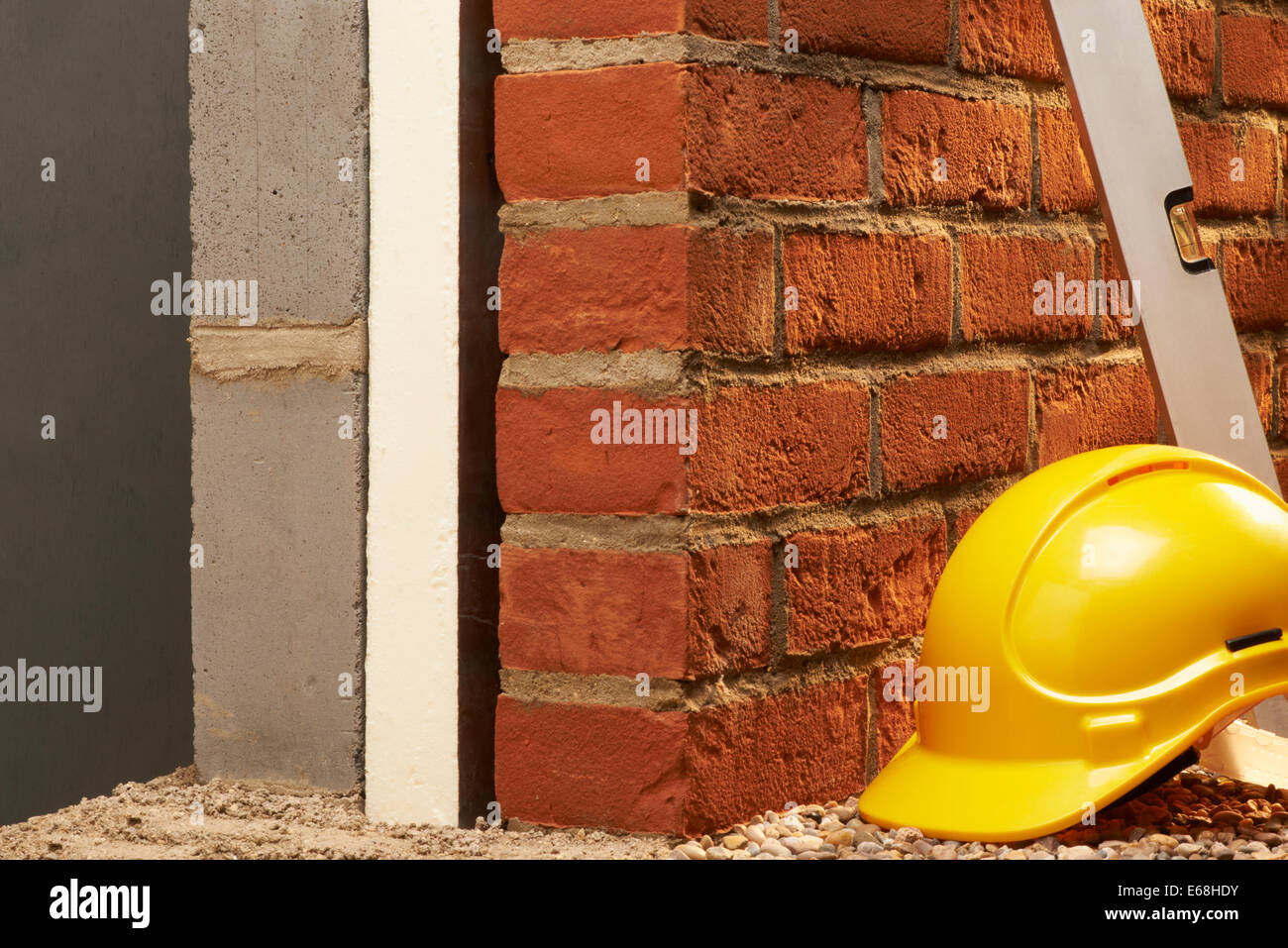
Brick Wall with Insulation, Cross Section Stock Photo Alamy
Section 9C - Radial Walls Section 9D - Banding Section 9E - Pilasters Section 9F - Glass Unit Masonry Section 9G - Fire Wall Construction Section 9H - Sound Walls Section 9I - Arches Section 9J - Masonry Floor Systems Chapter 10 - Definitions. Annotated Design and Construction Details for Concrete Masonry Chapter 1 Introduction

Brick Wall Detail Brick facade, Brick detail, Facade architecture
3B) Brick Masonry Section Properties Description. This Technical Notes is a design aid for the Building Code Requirements for Masonry Structures (ACI 530/ASCE 5/TMS 402-92) and Specifications for Masonry Structures (ACI 530.1/ASCE 6/TMS 602-92).

01.030.0702 Shelf Angle Detail Lipped Brick International Masonry
Navigate Section INTRODUCTION Concrete masonry is used to construct various foundation wall types, including full basement walls, crawlspace walls, stem walls and piers. Concrete masonry is well suited for below grade applications, because of its strength, durability, economy, and resistance to fire, insects and noise.